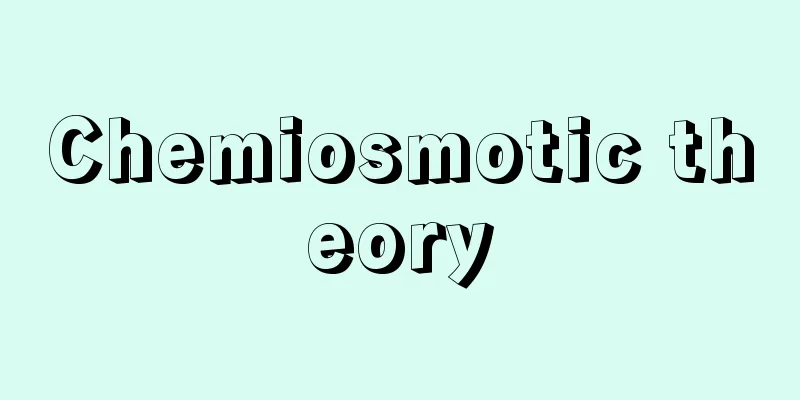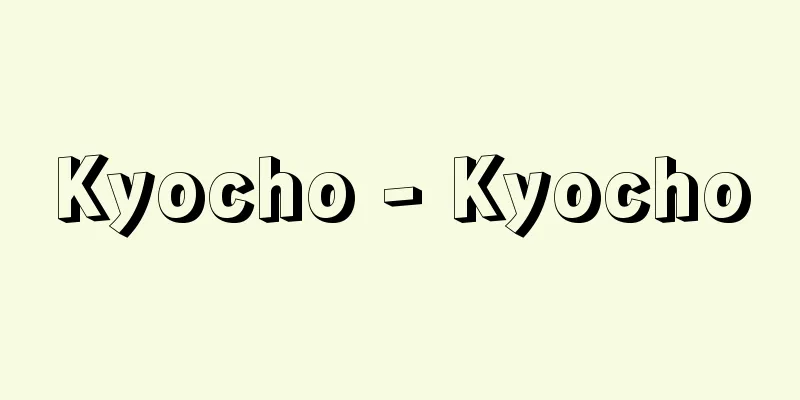Chemiosmotic theory

|
Also known as the Mitchell theory. A theory proposed by PD Mitchell as the mechanism by which ATP is produced by oxidative phosphorylation and photophosphorylation, which states that ATP is produced using the membrane potential difference caused by the concentration gradient of H + across the membrane as an energy source. Source: Asakura Publishing Nutrition and Biochemistry Dictionary Information |
|
ミッチェル説ともいう.酸化的リン酸化および光リン酸化によってATPが生成する機構としてP. D. Mitchellにより提唱された説で,膜を介するH+の濃度勾配による膜電位差をエネルギー源としてATPが生成するとする説.
出典 朝倉書店栄養・生化学辞典について 情報 |
>>: Price Flexibility and Employment
Recommend
Ono [town] - Ono
A town in Tamura County in the Abukuma Highlands i...
Myotis hosonoi (English spelling) Myotishosonoi
…[Yoshiyuki Mizuko]. . . *Some of the terminology...
Yongkang School - Eikogakuha
… [Zhejiang Culture] With such an environment, Zh...
Spectacled bear - Spectacled bear (English spelling)
A medium-sized bear with a large white marking aro...
Pumice hill - Karuisikyu
A pyroclastic cone formed when pumice piled up aro...
Times of India
One of India's leading English-language dailie...
Grand Coulee Dam
A multipurpose dam on the Columbia River in easter...
Yawata Steel Works
Formerly Japan's largest steel company. In the...
George Wald
American biochemist. Born in New York City. Gradu...
Revolutionary Communist Party
…This kind of armed demonstration was crushed by ...
"The Virgin Mary of Vladimir" - Vladimir's Mother
In the 13th century, this supernatural dignity wa...
Ingarra - Ingarra
…Ancient city of Sumer. The ruins are located in ...
Class Newspaper
...Also, in foreign countries, except for sociali...
Bove, OI (English spelling) BoveOI
…Also, grand architectural ensemble styles were c...
Emperor's Chronicle - Teiou Hennenki
A chronicle of 30 volumes (27 volumes remain toda...



![Ishibe [town] - Ishibe](/upload/images/67cae8ebb4353.webp)





